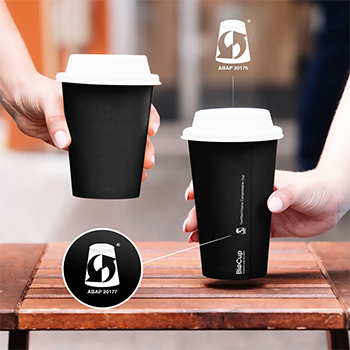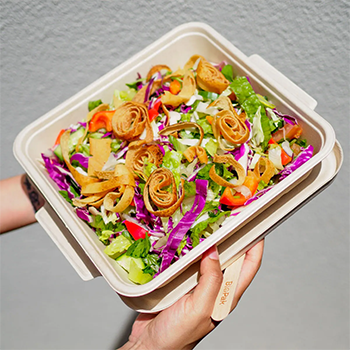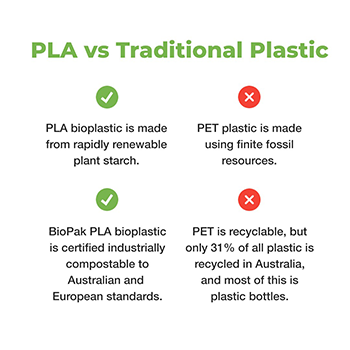The earth’s resources are finite, yet our collective appetite for consumption and convenience is depleting them faster than they can renew. For too long, the linear economy (where materials are extracted, turned into products, and then discarded) has dominated the way the world operates.
However, there is a growing global shift toward a circular economy, a model that treats materials as precious resources to be reused or regenerated. The circular movement is gaining momentum, emphasising a more sustainable way of living that aligns with the planet’s natural cycles.
Food waste is a glaring example of the inefficiencies of the linear economy. Shockingly, around one-third of all food produced globally is lost or wasted. That’s equal to around 1.3 billion tonnes of food, costing the global economy close to $940 billion each year. Even more concerning, food waste contributes approximately 8% of global greenhouse gas emissions.
Another striking example of wasteful consumption is the staggering amount of packaging waste. Packaging accounts for 5% of the global emissions. In 2020-21 alone, 2.96 million tonnes of packaging were sent to landfill in Australia. If all of this packaging had been recycled, Australia could have reduced its greenhouse gas emissions by approximately 2.2 million tonnes. It’s clear that we cannot continue along this unsustainable path.
But, there’s a simple solution - composting. Composting presents an opportunity to tackle food waste head-on, diverting it from landfill while restoring nutrients to the soil. Compostable packaging can further support this effort, providing a practical solution for reducing waste and closing the loop.
Let’s explore the importance of composting, the distinctions between industrial and home composting, the benefits of compostable food packaging, and the importance of education in fostering a truly circular economy.
Why Composting Matters
Composting is an extraordinary process that transforms kitchen scraps, garden waste, compostable packaging, and other organic materials into nutrient-rich compost. Through the work of living microorganisms like bacteria and fungi, organic materials are broken down into simpler organic and inorganic compounds. This decomposition process not only prevents valuable resources from ending up as waste but also creates a highly beneficial product that enriches the soil offering great benefits to both people and the environment. Essentially, composting is nature’s way of recycling organic matter!
Why is composting good for the environment? It transforms food waste into nutrient-rich compost that regenerates soil, supports healthy plants, and boosts agricultural yields. Composting also reduces methane emissions from landfill, captures carbon from the atmosphere, conserves water, prevents soil erosion, and aids in habitat restoration efforts.
Industrial Composting vs Home Composting
Organic waste can be composted in two primary ways: through industrial facilities or home composting systems. While both methods produce nutrient-rich compost, they achieve this through different processes.
Home composting is a simple and sustainable way to turn organic waste into nutrient-rich compost. Using tools like traditional compost bins, tumblers, bokashi or vermicomposting systems (worm farms), people can break down household waste such as food scraps, grass clippings, and leaves over several months. Home composting tends to be a slower process because the conditions are less controlled compared to industrial facilities. For instance, materials like PLA bioplastics (certified industrially compostable) require high temperatures and specific conditions to decompose efficiently, which aren’t achievable in a typical home compost setup. Additionally, items like meat, fish, and dairy are generally avoided in home composting to prevent attracting pests and vermin.
Industrial composting, on the other hand, is a more advanced, multi-step process carried out in specialised facilities. Industrial composting methods include techniques like turned windrow, aerated static pile, and in-vessel composting. By controlling variables such as material size, oxygen levels, moisture, and sustained high temperatures, these facilities can rapidly biodegrade organic waste into high-quality compost. Unlike home composting, industrial systems can handle a broader range of materials, including bioplastics and other products that require more rigorous conditions for decomposition.
Both methods play a crucial role in reducing organic waste and creating valuable compost, but the right choice depends on the type of waste, policies and available resources, and local composting infrastructure.
What is Compostable Packaging and What Are Its Benefits?
Compostable packaging is typically made from rapidly renewable, plant-based raw materials, giving it the ability to break down in a composting environment. Leading compostable packaging companies, like BioPak, use a range of innovative materials with the lowest environmental impact like Aqueous Coated Paper, Plant Fibre, PLA Bioplastic and FSC™ Certified Wood and Paper.
Aqueous-coated paperboard represents a breakthrough in sustainable packaging. Traditional coffee cups and takeaway containers often rely on polyethylene (PE) or bioplastic linings, which can complicate recycling and composting. In contrast, Aqueous BioCups and BioBoard Food Containers use a water-based coating that provides moisture and grease resistance while remaining home compostable.
These innovative cups and containers meet both home and industrial composting standards, breaking down naturally without leaving harmful residues behind. Aqueous BioCups are certified home compostable to AS5810 and industrially compostable to AS4736 and EN13432, ensuring they biodegrade in both commercial and backyard composting environments. Unlike conventional plastic-lined products, aqueous-coated packaging can be composted along with food scraps, making waste separation effortless and reducing landfill contributions.
In the foodservice industry, adopting compostable aqueous-coated packaging aligns with sustainability goals while maintaining the durability and performance required for hot and cold foods. BioBoard containers, available in rectangular and square formats, are made from responsibly sourced, FSC™-certified paperboard and are certified industrial compostable to AS4736.

Plant Fibre Pulp Products
Plant fibre is a rapidly renewable, natural material derived from sugarcane bagasse, bamboo, or other agricultural by-products. Instead of being discarded as waste, these materials are transformed into sturdy, lightweight packaging solutions that decompose efficiently in composting environments. BioPak’s Plant Fibre range includes bowls, trays, and takeaway containers designed to replace traditional plastic packaging.
Unlike petroleum-based plastics, plant fibre products require significantly less energy and water to produce, further reducing their environmental footprint. Their natural composition allows them to degrade within 90 days in an industrial composting facility and within a few months in home composting conditions, leaving behind nutrient-rich compost.
Food service providers choosing plant fibre products not only reduce their reliance on fossil fuel-based materials but also contribute to a closed-loop circular economy by ensuring that their packaging waste is composted rather than sent to landfill.

Clear PLA and PLA-Lined Paper Cups
Polylactic Acid (PLA) is a plant-derived biopolymer made from renewable resources such as corn starch or sugarcane. It serves as a sustainable alternative to conventional petroleum-based plastics, offering biodegradability under specific conditions. BioPak PLA bioplastic products are certified industrially compostable to Australian and European Standards (AS4736, EN13432)

When it comes to diverting food waste from landfill, compostable packaging can play a pivotal role as it acts as a vehicle to carry food waste. Both food scraps and used compostable packaging can be placed in a single bin, simplifying organic waste collection and reducing microplastic contamination caused by traditional plastic packaging. For the food service industry, compostable packaging is the ideal choice. It helps minimise food waste sent to landfill, mitigates climate change factors, and appeals to discerning consumers who are looking for sustainable services and products.
When combined with a well-structured composting infrastructure, compostable packaging creates a circular economy business model balancing environmental responsibility with operational efficiency.
The Importance of Education and Aligned National Policy
Australians are eager to make responsible choices when it comes to disposing of packaging, but new research reveals significant challenges. A study conducted by Compost Connect and BioPak found that, while the majority of Australians are committed to proper disposal, confusion over logos and a lack of council support for composting continue to be major obstacles.
One of the key issues identified in the movement toward better waste management is the confusion surrounding compostable and recycling logos. According to recent research, only 1 in 10 Australians can accurately identify compostable logos, and 43% are familiar with the ARL recycling logos. This confusion points to a need for clearer visual cues and more accessible educational resources, like Compost for Climate, to help consumers make informed decisions. The good news, however, is that awareness is growing. The study found that 70% of respondents now plan to actively seek out compostable logos when choosing products, signalling a shift towards more sustainable consumer behaviour. As this awareness continues to rise, the hope is that both individuals and businesses will increasingly prioritise compostable packaging, ultimately driving broader environmental change.
BioPak and Compost Connect are urging the government to adopt a unified approach to tackle the ongoing challenges posed by current packaging legislation and waste disposal. They point to the success of South Australia’s composting programs as an example of what can be achieved. Currently, each state in Australia has its own single-use plastic bans, local councils provide different types of kerbside waste bins, and policies regarding the acceptance or ban of compostable packaging in FOGO (Food Organics and Green Organics) programs vary widely. This fragmented landscape creates significant challenges for businesses trying to integrate sustainable practices into their operations and for consumers trying to navigate waste management effectively.